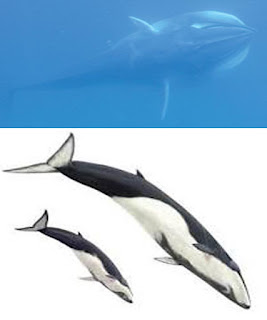Never heard of an Omura’s whale? There’s a good reason. Until recently, no one had laid eyes on one in the wild. Before 2003, the Omura’s whale was thought to be simply a dwarf version of another type of whale. Then Japanese scientists studying the whale’s DNA and bodily characteristics decided it ought to be its own species, and named it after the late cetologist Hideo Omura. Still, all they had to work with were carcasses caught by whalers or washed up on the beach. They gleaned what information they could from the animals’ ear wax and stomach contents, but no one had ever seen Balaenoptera omurai swimming or eating or interacting. Pretty much all scientists knew was that it lived in the western Pacific.
Imagine the surprise, then, of researchers in a boat in the Indian Ocean when they spied some Omura’s whales in the distance. During a survey of marine mammals off Madagascar’s coast, New England Aquarium scientist Salvatore Cerchio and his colleagues saw whales with markings that seemed to match B. omurai. They used biopsy darts to snag tissue samples from 18 of the whales as they swam by. DNA analysis confirmed it: the animals were the elusive Omura’s whales.
Over the next few years, the scientists returned and recorded every detail they could about this population. Since they were the first humans to observe Omura’s whales in nature, everything they learned about the animals was new:
After 44 sightings, along with underwater video of three individuals, the scientists had a much better idea of what Omura’s whales look like. Adults are 8 to 12 meters long, and calves are half that size. (The researchers estimated these numbers by waiting until the whales swam close by, then comparing their length to the boat itself, which was about one whale long.) The animals are mostly dark gray but have a big white patch on their right lower jaw, as if wearing a lobster bib that got pushed over to one side.
More news thefinancialexpress-bd











0 comments:
Post a Comment